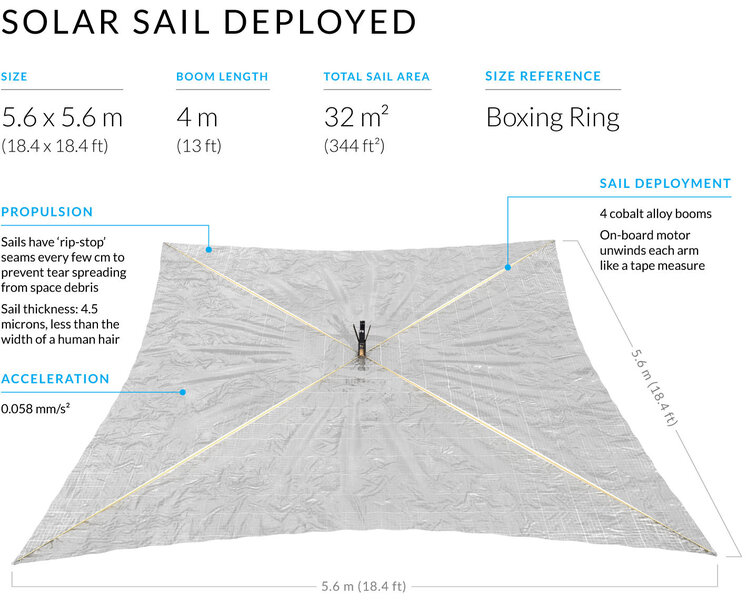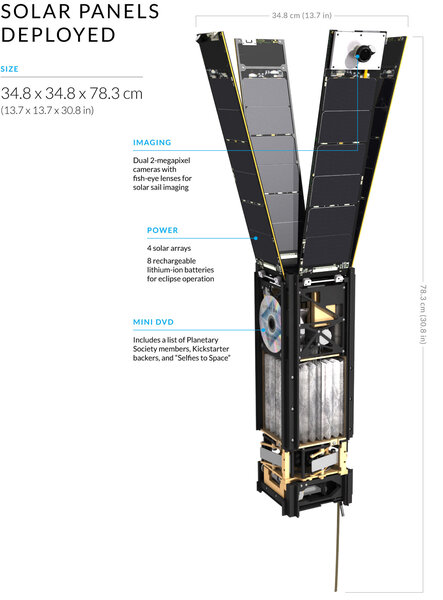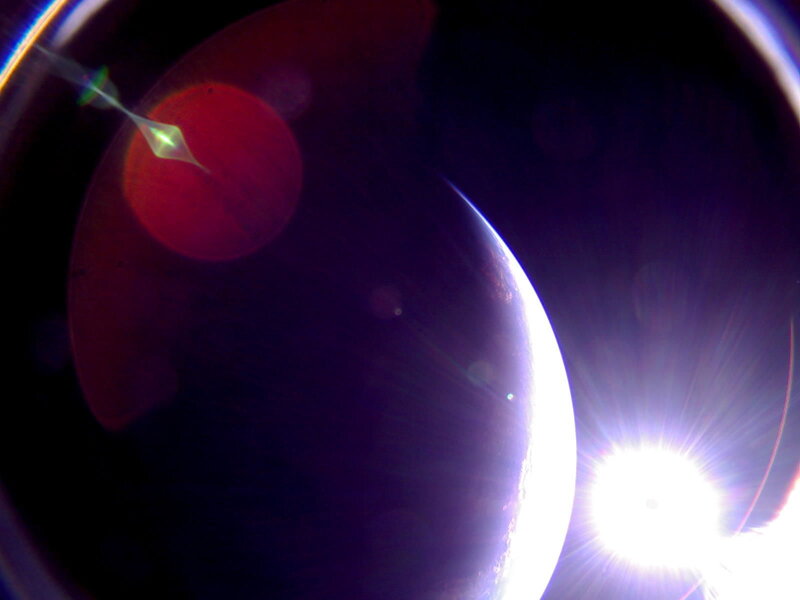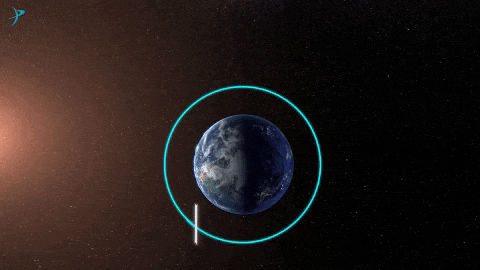Create a free profile to get unlimited access to exclusive videos, sweepstakes, and more!
Soon, we may be sailing between the planets on a beam of sunlight
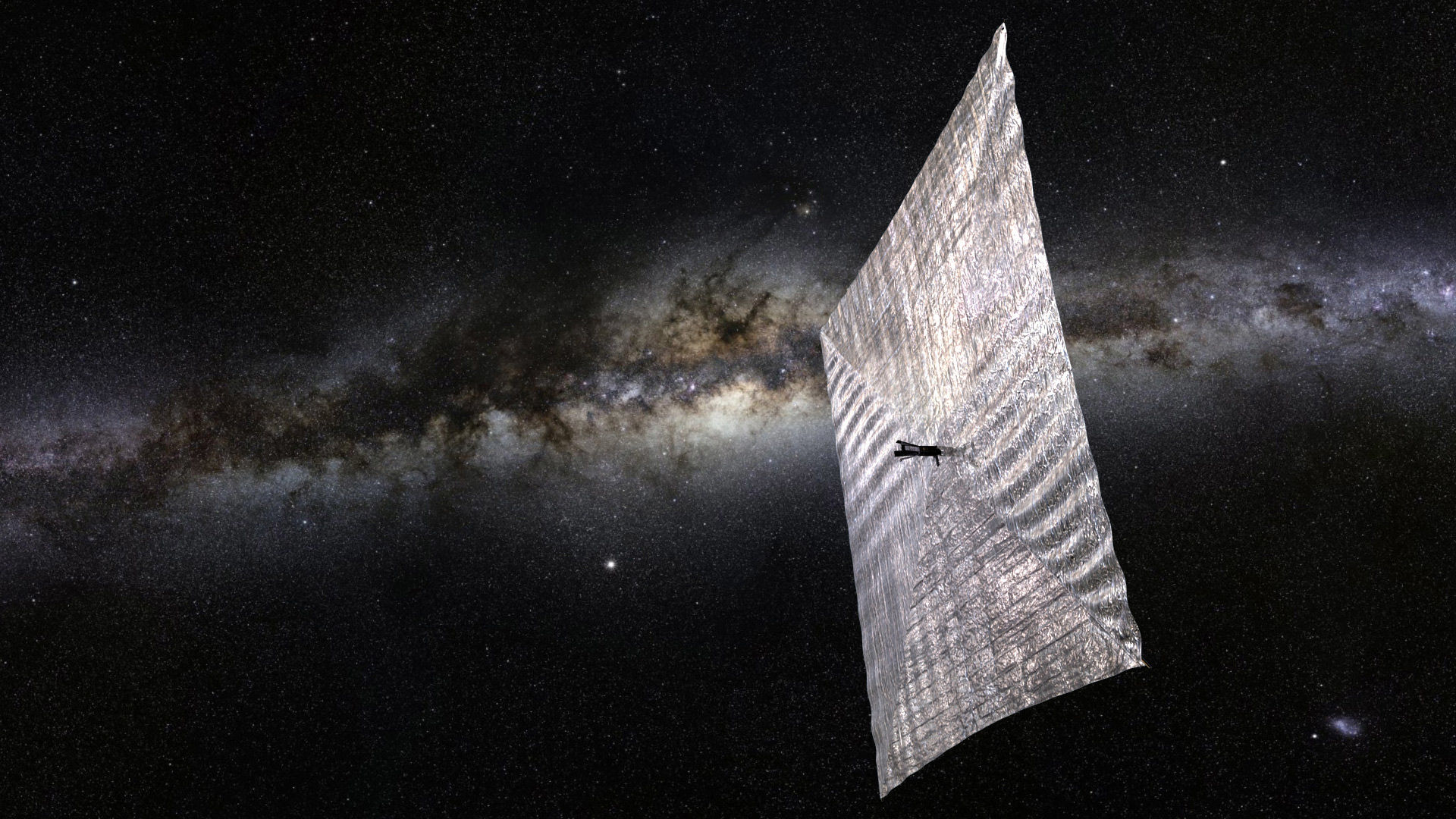
On June 25, 2019, SpaceX launched a second Falcon Heavy rocket. Among its many payloads (it can lift a lot of stuff) was LightSail2, an experimental spacecraft lead by The Planetary Society. It’s a CubeSat, a very small spacecraft measuring just 10 x 10 x 30 centimeters — you could fit it in a typical desk drawer.
But inside is a tightly folded Mylar sheet that, when unfolded, measures 5.6 meters on a side. It’s just 4.5 microns thick, too, and so lightweight that even with the CubeSat frame the whole assembly weighs less than 5 kilograms!
The purpose of this mission is to test the feasibility of solar sailing: Literally using sunlight to propel a spacecraft. But before I tell you what it’s up to now, I have to tell you how it’s going to do this.
Are you ready? Here comes the science!
In a nutshell, light has momentum. Now, those of you with some science background might be asking, “Wait, momentum is mass times velocity. Light has no mass! So how can it have momentum?”
The answer, as it usually is, is relativity. You’ve heard of Einstein’s famous equation, E = mc2? But that’s actually not quite right. Well, it’s right, but it’s not complete. The whole equation looks like this:
E2 = m2c4 + p2c2
E is energy, m is mass, c is the speed of light… and p is momentum. Normally, we use this equation when we talk about converting matter into energy, and in that case you can assume the momentum is 0, so the second term on the right is 0. Then you take the square root of both sides to get the famous equation.
… except I lied. m is rest mass, the mass of a particle if it has 0 velocity relative to you. A photon, a particle of light, is never at rest! It’s always moving, so it has 0 rest mass, and the first term on the right hand side is 0. But it still has energy, because by definition a photon is energy. That means it must have some value for its momentum. It’s small, but it’s there. I’ll note I’m simplifying a fairly complex and subtle situation, but if you want more info you can jaunt over to here, but don’t go too quickly or else your mass will increase to infinity.
So the whole point is that yes, photons can have momentum… and that momentum can be transferred, in much the same way that a baseball player transfers momentum of the swinging bat to a baseball to make it move very rapidly.
The amount of momentum a photon has is small. How could it propel a spacecraft? Well, you could try catching a lot of photons. The more that hit the spacecraft, the more momentum is transferred. But it would help a lot if the spacecraft doesn’t have much mass! You want a spacecraft to move rapidly (space is big, you may recall), so lowering its mass means it’ll accelerate more rapidly. Think of it this way: If you push on a baseball you can get it moving at 100 km/hr in just a second or so. If you try pushing on a car it’ll take significantly longer. Lower mass = higher acceleration = shorter travel times.
So this recipe calls for making a very large collector of photons while minimizing its mass. In other words, a solar sail.
The beauty of a solar sail is that your fuel is free — it’s sunlight — and it keeps coming. Not only that, you’re in space where there’s little or no resistance due to air, so there’s no drag. As long as you’re in sunlight, you’re accelerating. Models of very large sails made of very thin, lightweight material show that you can get a spacecraft moving at a significant fraction of the speed of light. That is truly hauling mass.
The problem is that the acceleration is very low*. It can take weeks or months to get your sail up to significant speed. But that’s OK; because the top speed is far higher than that of a chemical rocket, so it’s a variation on the tortoise and hare thing. It starts off slow but it’s always accelerating. After a while it’ll be moving way faster than “normal” spacecraft, and your travel times can be comparable or even faster!
And that’s why The Planetary Society built a solar sail. This could be the future of interplanetary exploration. Their first attempt, Cosmos 1, never got to space due to a rocket failure. The second was much larger, and different enough they called it LightSail 1. That had a successful test flight in 2015.
Their new version, LightSail 2, successfully launched into orbit on the Falcon Heavy. It was deployed on July 2, 2019, and is currently orbiting the Earth and undergoing a lengthy checkout process. The sail is still packed up inside the CubeSat, and I expect a date for the unfurling will be announced soon. Just on Friday the solar panels were deployed, and it took this lovely image of Earth:
Wow. There are various lens flares in it (sunlight reflected off internal optics) but the Earth itself is the crescent dominating the shot. That's good to see.
Once it deploys the sail, it’ll get to work. The first actual jaunt will be to raise its orbit. It will open the sail to take in photons when it’s in the part of its orbit moving away from the Sun; that will increase its speed and its orbital energy, raising the orbit farther from Earth. If it stays open on the other half of its orbit when it’s moving toward the Sun, though, it’ll lose energy and drop back down. So instead it will rotate so the sail is edge-on to the Sun, providing the smallest area to it. Then the process will repeat.
That’s planned for some time in the near future. In the meantime — and this is cool — you can keep track of where LightSail 2 is, what it’s doing, and even whether it’s visible from your location (after the sail deploys; right now it’s far too small and therefore too dim to be seen) by going to the LightSail 2 Mission Control page (an explanation of the page is also available). That lists how much power it has, the sail status, mission elapsed time, and importantly the rotation rate of the spacecraft — that last part is critical since the sail has to be pointed the right way to work! The rotation rate in degrees per second is given for each of the three principle axes (x, y, z) of the spacecraft.
I’m really looking forward to all this and seeing how the sail performs. One reason is that this could be a truly viable way to get missions to other worlds, and it could be far less expensive than using a rocket on the spacecraft. Another reason is that I’ve long loved solar sails, and even got to do a little fiddling with the idea when I was the science consultant on “Salvation”.
The idea of literally sailing to the planets — to the stars — is so romantic that I do hope we can make it a reality.
*Well, that’s one problem. Another is slowing your spacecraft down at the target. But there are ways to do that, too. You can always just pack a rocket in your spacecraft, for that matter, to use later… but that mass will increase travel times.
